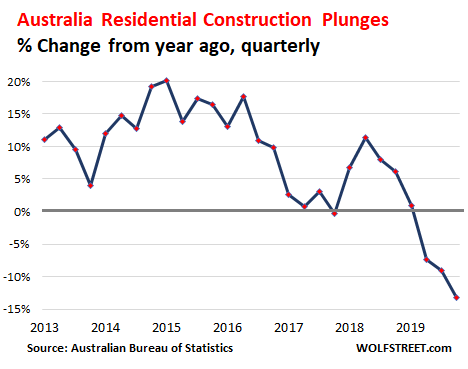Table of Contents
- – The Significance of the Construction Industry...
- – The Australian Construction Market Is Anticipa...
- – Prefab And The Australian Building Sector in T...
- – Present Trends in the Australian Building And...
- – List Of Top 10 Largest Construction Companies...
- – 1. Rise of Sustainable Building.
- – Australia Ai Group Industry Index - Construct...
- – 2. Adoption of Building And Construction Inn...
- – Construction Industry Trends Australia - 202...
- – 3. Modular and Prefabricated Building And Co...
- – Tackling Geopolitical Challenges In Australi...
- – Obstacles Facing the Building Market in Austr...
- – The Carbon Footprint Of Australia's Construc...
- – Australia - Building & Construction in Canbe...
- – 1. Labor Scarcities and Skill Spaces.
- – Report: Australian Construction Sector Outlo...
- – 2. Increasing Product Costs.
- – Issues In Australian Construction Industry i...
- – Prefab And The Australian Building Sector in...
- – 3. Regulatory and Compliance Challenges.
- – Path-to-market: Australia's Construction Ind...
- – Future Potential Customers: What Lies Ahead f...
- – Construction in Port Hedland Western Austral...
- – 1. Financial Investment in Facilities Projects.
- – Prefab And The Australian Building Sector in...
- – 2. Emphasis on Smart Cities.
- – Australian Construction Industry Forum: Home...
- – 3. Increased Concentrate On Resilient Building.
- – Path-to-market: Australia's Construction Ind...
- – Conclusion: A Growing Market with Limitless P...
- – Australia Construction Industry Report 2023:...
- – How Big Is The Construction Industry In Aust...
The Building Market in Australia: Patterns, Difficulties, and Future Prospects
Australia's building market is an important part of the country's economy, playing a considerable function in driving development, employment, and infrastructure advancement. From high-rise buildings and industrial advancements to facilities tasks and residential real estate, the building sector is a dynamic force that continuously forms the country's landscape. In this blog, we'll delve into the state of the building market in Australia, its current trends, difficulties, and what the future holds.
The Significance of the Construction Industry in Australia
The Australian Construction Market Is Anticipated To in Giffith New South Wales Australia
The construction market is among Australia's biggest sectors, contributing considerably to the economy. It not only provides essential infrastructure and housing but also supports countless jobs and a large range of markets, including manufacturing, engineering, and design.
Prefab And The Australian Building Sector in Tuncurry New South Wales Australia
- Economic Contribution: The construction industry accounts for around 9% of Australia's GDP and uses over a million individuals, making it among the top factors to the country's economy.
- Task Development: It offers a large range of job opportunity, from tradespeople and engineers to project supervisors and designers, supporting incomes across the country.
- Facilities Advancement: Significant infrastructure jobs like roadways, bridges, rail networks, and public structures are vital to the development and development of Australia's cities and areas.
Present Trends in the Australian Building And Construction Industry
List Of Top 10 Largest Construction Companies In Australia in Ulverstone Tasmania Oz
The building sector is going through substantial changes, driven by advancements in innovation, shifts in sustainability practices, and the evolving needs of urban populations. Here are some key patterns shaping the market today:
1. Rise of Sustainable Building.
Australia Ai Group Industry Index - Construction in Moama New South Wales Oz
- Green Structure Practices: Sustainability is now a significant focus in building jobs across Australia. Home builders and designers are progressively using eco-friendly products, energy-efficient styles, and green structure certifications to lower environmental impact.
- Net-Zero Targets: With Australia's commitment to minimizing carbon emissions, there is a push towards net-zero structures that produce as much energy as they take in. This trend is getting momentum in both commercial and property jobs.
2. Adoption of Building And Construction Innovation.
- Structure Details Modelling (BIM): BIM innovation is ending up being the requirement in project preparation and style, enabling for more effective building and construction procedures, enhanced partnership, and minimized expenses.
- Drones and Robotics: Using drones for site studies and robotics for jobs like bricklaying and demolition is transforming job websites, improving accuracy, security, and performance.
- 3D Printing: 3D printing innovation is making its method into the building industry, allowing the creation of structures quicker and at a lower expense. This innovation is particularly helpful in creating custom elements and small-scale real estate tasks.
Construction Industry Trends Australia - 2023 in Hobart Tasmania Aus
3. Modular and Prefabricated Building And Construction.
Tackling Geopolitical Challenges In Australia's Construction ... in Maitland New South Wales Aus
- Effectiveness and Speed: Modular and premade construction approaches are acquiring appeal due to their capability to accelerate job timelines and minimize on-site waste. Prefabricated parts are produced in a regulated environment and then put together on-site, ensuring consistency and quality.
- Affordable Solutions: These methods provide cost savings by reducing labor costs and reducing the risk of project hold-ups, making them an attractive choice for both business and residential advancements.
Obstacles Facing the Building Market in Australia
The Carbon Footprint Of Australia's Construction Sector in Kalgoorlie-Boulder Western Australia
Despite its development and development, the Australian building industry faces a number of challenges that can impact its development and success:
Australia - Building & Construction in Canberra Australian Capital Territory Australia
1. Labor Scarcities and Skill Spaces.
- Demand for Skilled Employees: There is a substantial lack of proficient workers in the construction market, particularly in specialized locations such as electrical, plumbing, and project management. This shortage is resulting in increased competitors for talent and greater labor expenses.
- Training and Advancement: Resolving this ability gap needs investment in training programs and apprenticeships to attract new talent into the market and upskill existing employees to satisfy the demands of modern-day building and construction techniques.
Report: Australian Construction Sector Outlook in Mount Gambier SA Aus

2. Increasing Product Costs.
Issues In Australian Construction Industry in Bendigo Victoria Australia
- Supply Chain Disruptions: The international supply chain disruptions caused by events like the COVID-19 pandemic have actually resulted in a spike in material expenses, including wood, steel, and concrete. These increasing costs can cause task delays and increased costs for designers and contractors.
- Influence On Task Spending Plans: Fluctuating rates make it tough to accurately budget tasks, possibly resulting in monetary pressure for smaller sized construction business and contractors.
Prefab And The Australian Building Sector in Ballarat Victoria Oz
3. Regulatory and Compliance Challenges.
Path-to-market: Australia's Construction Industry in Mackay Queensland Oz
- Building Regulations and Standards: Navigating Australia's rigid building codes and regulatory requirements can be complicated. Compliance with these policies is important to guarantee safety and sustainability however can likewise contribute to the time and expense of projects.
- Sustainability Requireds: As the push for greener building practices grows, developers are needed to stick to more strenuous sustainability requirements, which can be both a difficulty and a chance for development.
Future Potential Customers: What Lies Ahead for the Building And Construction Industry in Australia?
Construction in Port Hedland Western Australia Australia
The future of Australia's construction industry looks promising, with several chances for development and development on the horizon. Here's what we can anticipate in the coming years:
1. Financial Investment in Facilities Projects.
Prefab And The Australian Building Sector in Yanchep Western Australia Australia
- Government Initiatives: The Australian government continues to invest heavily in infrastructure development, consisting of transport networks, energy centers, and public facilities. This financial investment will create brand-new job opportunities and enhance the economy.
- Urban Growth: As cities expand and populations grow, there will be a higher need for residential and business developments, specifically in metropolitan centers like Sydney, Melbourne, and Brisbane.
2. Emphasis on Smart Cities.
- Technological Combination: Smart city initiatives are likely to drive the building and construction of smart buildings that incorporate technologies such as IoT (Web of Things), AI (Expert System), and information analytics. These improvements will make city living more sustainable, effective, and connected.
- Sustainable Facilities: Future construction projects will concentrate on producing sustainable city environments that prioritize green areas, renewable resource, and efficient resource management.
Australian Construction Industry Forum: Home in Batemans Bay New South Wales Oz
3. Increased Concentrate On Resilient Building.
- Environment Adaptation: With the growing effect of environment modification, there will be a shift towards developing more resilient structures that can stand up to extreme climate condition, consisting of floods, bushfires, and cyclones.
- Disaster-Resilient Styles: The market will likely adopt design practices that emphasize sturdiness, safety, and adaptability to guarantee long-term facilities sustainability.
Path-to-market: Australia's Construction Industry in Ulverstone Tasmania Australia
Conclusion: A Growing Market with Limitless Potential
Australia Construction Industry Report 2023: Market Is ... in Esperance Western Australia Australia

The construction industry in Australia continues to progress, driven by technological innovation, sustainability trends, and a robust demand for infrastructure. While difficulties like labor scarcities and rising material costs persist, the sector's focus on adjusting to these modifications indicates a bright future. For businesses and specialists in this field, staying ahead of industry patterns and welcoming brand-new technologies will be crucial to growing in this vibrant environment.
How Big Is The Construction Industry In Australia? in Hervey Bay Queensland Australia
Whether you are a professional, financier, or entrepreneur, the Australian building market offers enormous chances for development and innovation. As the nation constructs towards a more sustainable and connected future, the construction sector will unquestionably play a pivotal function in shaping Australia's landscape for years to come.
Table of Contents
- – The Significance of the Construction Industry...
- – The Australian Construction Market Is Anticipa...
- – Prefab And The Australian Building Sector in T...
- – Present Trends in the Australian Building And...
- – List Of Top 10 Largest Construction Companies...
- – 1. Rise of Sustainable Building.
- – Australia Ai Group Industry Index - Construct...
- – 2. Adoption of Building And Construction Inn...
- – Construction Industry Trends Australia - 202...
- – 3. Modular and Prefabricated Building And Co...
- – Tackling Geopolitical Challenges In Australi...
- – Obstacles Facing the Building Market in Austr...
- – The Carbon Footprint Of Australia's Construc...
- – Australia - Building & Construction in Canbe...
- – 1. Labor Scarcities and Skill Spaces.
- – Report: Australian Construction Sector Outlo...
- – 2. Increasing Product Costs.
- – Issues In Australian Construction Industry i...
- – Prefab And The Australian Building Sector in...
- – 3. Regulatory and Compliance Challenges.
- – Path-to-market: Australia's Construction Ind...
- – Future Potential Customers: What Lies Ahead f...
- – Construction in Port Hedland Western Austral...
- – 1. Financial Investment in Facilities Projects.
- – Prefab And The Australian Building Sector in...
- – 2. Emphasis on Smart Cities.
- – Australian Construction Industry Forum: Home...
- – 3. Increased Concentrate On Resilient Building.
- – Path-to-market: Australia's Construction Ind...
- – Conclusion: A Growing Market with Limitless P...
- – Australia Construction Industry Report 2023:...
- – How Big Is The Construction Industry In Aust...
Latest Posts
Local Best Comprehensive Excavator Maintenance Guide Restorations
Construction Industry in Gladstone Queensland Australia
Best Commercial Kato Excavators Company
Navigation
Latest Posts
Local Best Comprehensive Excavator Maintenance Guide Restorations
Construction Industry in Gladstone Queensland Australia
Best Commercial Kato Excavators Company